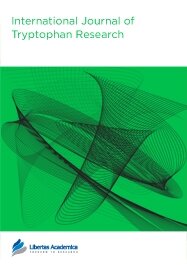

Publication Date: 14 Jan 2009
Journal: International Journal of Tryptophan Research

In the present review we summarize the relationship between the amino acid, tryptophan, the neurotransmitter, serotonin, and the indole, melatonin, with the rhythms of sleep/wake and the immune response along with the possible connections between the alterations in these rhythms due to aging and the so-called “serotonin and melatonin deficiency state.” The decrease associated with aging of the brain and circulating levels of serotonin and melatonin seemingly contributes to the alterations of both the sleep/wake cycle and the immune response that typically accompany old age. The supplemental administration of tryptophan, e.g. the inclusion of tryptophan-enriched food in the diet, might help to remediate these age- related alterations due to its capacity of raise the serotonin and melatonin levels in the brain and blood. Herein, we also summarize a set of studies related to the potential role that tryptophan, and its derived product melatonin, may play in the restoration of the aged circadian rhythms of sleep/wake and immune response, taking the ringdove (Streptopelia risoria) as a suitable model.
PDF (380.01 KB PDF FORMAT)
RIS citation (ENDNOTE, REFERENCE MANAGER, PROCITE, REFWORKS)
BibTex citation (BIBDESK, LATEX)
XML
PMC HTML
This is my second publication in Int J Tryptophan Res and my experience on this occasion was as great and enjoyable as with my first paper immediately preceding this one. I commend the Editors and the Editorial Staff of this new and exciting journal for their professionalism and dedication to science and scientific publishing.

All authors are surveyed after their articles are published. Authors are asked to rate their experience in a variety of areas, and their responses help us to monitor our performance. Presented here are their responses in some key areas. No 'poor' or 'very poor' responses were received; these are represented in the 'other' category.See Our Results
Copyright © 2013 Libertas Academica Ltd (except open access articles and accompanying metadata and supplementary files.)
FacebookGoogle+Twitter
PinterestTumblrYouTube